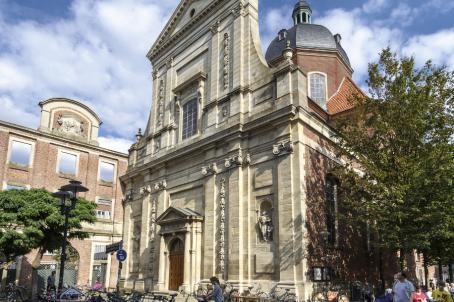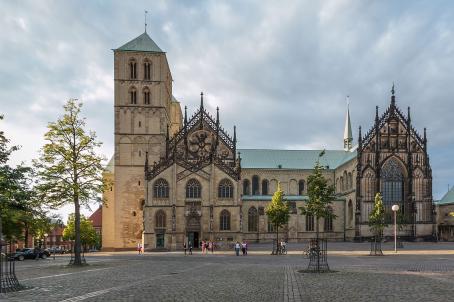St Elisabeth, Münster

St. Elisabeth Church in Münster, built in 1939 and rebuilt after destruction during World War II, showcases distinct architectural features such as its basilica layout, coffered ceiling, and a notable Pentecost mosaic. Its repurposing into a gymnasium and the construction of additional buildings reflect a commitment to preserving its legacy while meeting the evolving needs of the community.
About this building
St. Elisabeth Church in Münster, Germany, was constructed and consecrated in 1939. The church was destroyed during a bombing raid in 1944 but was reconstructed between 1946 and 1951.
Architecturally, the St. Elisabeth Church is a three-aisled basilica made of red brick and covered with a pitched roof of red clay tiles. Its main feature is the spacious central nave with a coffered ceiling, flanked by two narrow side aisles connected to the main nave by arches. The church's entrance is in the east, adorned with a new canopy and a large circular stained glass window. The western choir wall is home to a significant Pentecost mosaic created in 1963.
On November 16, 2008, the church was deconsecrated by Weihbischof Franz-Josef Overbeck.In subsequent years, the church underwent a major renovation. From 2013 to 2014, it was converted into a gymnasium primarily used by the Montessori School. The side aisles were repurposed as changing rooms, while the former rectory and southern parish house were demolished. In their place, a new building was constructed to house the St. Elisabeth Kindergarten on the ground floor, with student apartments above.





